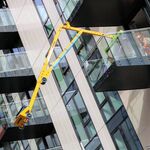drum118
Superstar
My background was in that field and every large manufacture, supplier and most mills that I dealt with or work for don't exist today. I even gave myself the pink slip when I close down a division.But articles from earlier in the year citing the problems said that "walls" weren't attaching properly to "under frames", suggesting that Mexico is building a floor slab, wall slabs, and roof slabs, which are then assembled at Thunder Bay. Flat panels (walls/floors/roofs) would transport up from Mexico a lot more compactly than an assembled car frame, which would be a big hollow box...
Please cite how you know this. I work in this particular industry and can think of a handful of companies I deal with locally who could easily handle this work.
You need to have more than one project in your shop all the time to pay the bills in case something happens to a project that has to stop production for sometime. Having a project being delay for sometime could mean layoff of employees to the point you could loose them to someone else if you are a one line production company. This mean retraining new workers and slowing production delivery until they are train, if you can find them once you restart up, depending on the delay. I have see and have put hold on various projects due to various issues lasting more than 6 months to the point another project took it spot to make sure there was work for the employees. Getting that delay project back into production can cause a lot of issues at that time.
Thunder Bay has 4+ different production lines with the TTC cars being one of them and getting pay by 3+ buyers.
One can say that these frames are one piece that are made up of many section. I have seen similar things personally in the past as well photos.
How they are welded together seems to be the issue which goes back to quality of welding and inspection. I have seen welds that look great, but x-ray shows they are not to the point there is no penetration to the point the weld will fail at anytime.
If they are being made up as panels like you stated, then there are more companies that could do this work since it will require less shop floor space. If its a box, then the numbers are smaller. Shipping cost will be higher with a box than just panels.
We are doing a lot of guessing since there is no clear picture as how they are been made in Mexico without someone having first hand knowledge of what taking place in the first place.
The other question who supply the jigs to Mexico?? Depending on who supply the jigs, where they inspected to see if they were built to the drawings correctly?? If the jig is wrong, the frames will be wrong and this goes back to the Minneapolis order.





